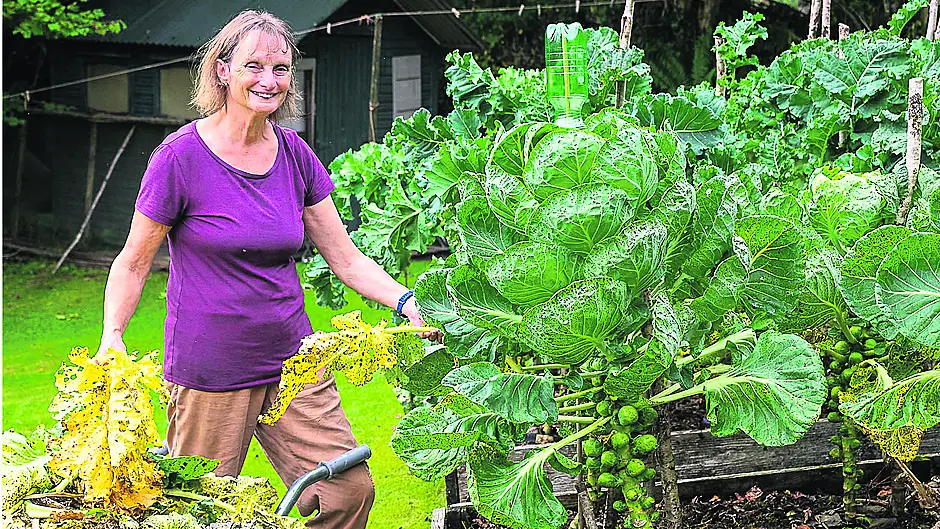By Joyce Russell
THERE’S something kind of comforting about autumn. Growth is slowing down and the garden is way less demanding. There are still all the tidying and clearing jobs to do, of course, but there’s less urgency to each task than there is in spring and summer.
It’s been a bumper year for many crops – including the abundant blackberries that fill our hedgerows. Hazelnuts look promising too, so even if you don’t have a garden, you can get out and do some careful harvesting.
Brassica care
Cabbages, kales, broccoli, cauliflowers and Brussels sprouts are all growing fast and should be strong enough to provide plenty of food from now on. Large leaves suppress weeds and the brassica bed may not need much attention. You do need to stake and tie in tall plants – the first autumn winds may be just around the corner. You may also need to water the bed if soil drains quickly and rain is minimal.
Lower leaves start to yellow and drop as we head through autumn. Their job has been to feed the plant while it grows tall and strong, but they become redundant once they are tough and tatty. The yellowing process may be sped up if plants are short of water, but it always happens at some point. The upper part of plants and growing points should still be healthy, green and growing. Gather up the fallen leaves and tidy the bed. There will be fewer places for pests to hide. The bed looks better too and the dropped leaves can be added to the compost heap.
Some sprout plants may have already produced large round buttons. Pick and use these before slugs creep up the stems to damage them. Higher sprouts will grow as the season progresses. You can start to pick kale too, from large plants, but take care never to strip off too many leaves at one go or the plant will suffer. Kale will crop right through until May if it is looked after.
French marigolds
I grow these in the polytunnel to protect tomatoes and strawberries from white fly. They seem to do the job successfully and they look pretty through the summer. If you pull off dead heads now and cut back any dead stems, the healthy parts of the plant will keep flowering.
They are annual plants and will be killed by a hard frost, even under cover, but up until that point they can provide a few cut flowers long after the ones outdoors in garden beds are finished.
Tomatoes galore
It’s been a terrific year for tomatoes so far. Plants enjoyed the sun and many fruits ripened earlier than usual. As always, the smaller fruiting varieties ripen fruit before the larger ones, but there have been plenty of both types to eat, freeze, and make into chutney.
Some trusses had a mix of normal sized fruit and some fruits were smaller and less tasty. This has a lot to do with the weather at the time fruits set and start growing. If a plant is under stress from lack of water, or too high a temperature, it is more likely to produce some small fruits. It was hard to keep temperatures down under cover at some times this summer. The best we can do is have all doors and windows open and keep spraying soil and paths with cool water to lower the effects of temperature stress.
Beautiful basil
I bought two pots of basil plants from the supermarket this year. I split each one into eight and planted the sections into the polytunnel in May. They struggled a little when we had a cool damp spell, but they flourished as soon as things warmed up. The plants are still going strong now and look set to keep producing leaves for a while longer.
Basil really likes sun and doesn’t like too wet a root run, so conditions have been about as perfect as they can get in West Cork.
Flower borders
These can start to look tatty as some plants stop flowering and others don’t flower just as prolifically. The flowering season may be shorter than usual because of drought. A bed will always look much better if you get out the secateurs and start to restore a bit of order.
Cut out any dead stems, dead flowers, and remove any weeds. Lift whole annual plants that have finished looking attractive and dig some compost into the space before replanting with a few bulbs or some bedding plants that will provide fresh colour.
A good tidy up will make everything look neater, so even if there are fewer flowers, you will be able to see them much better.
Aim for a border that you want to look at, not one that you rush past because it looks neglected.









